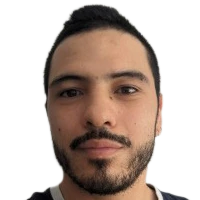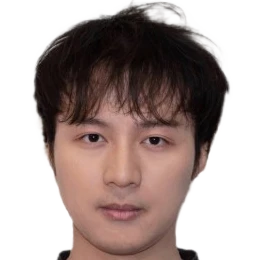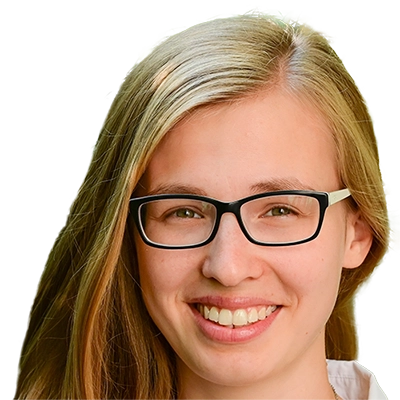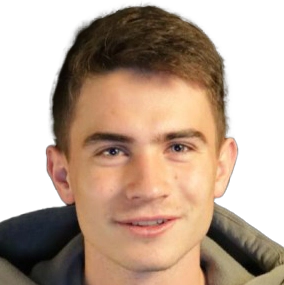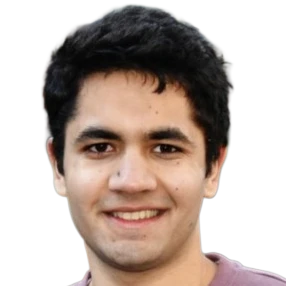Research Group Gitta Kutyniok
Gitta Kutyniok
holds the Bavarian AI Chair for Mathematical Foundations of Artificial Intelligence at LMU Munich.
The chair’s research focus on the intersection of mathematics and artificial intelligence, aiming for both a mathematical understanding of artificial intelligence and artificial intelligence for mathematical problems.
Team members @MCML
PostDocs
PhD Students
Recent News @MCML
Publications @MCML
2026
[58]
C. Kneissl • C. Bülte • P. Scholl • G. Kutyniok
Improved probabilistic regression using diffusion models.
NLDL 2026 - Northern Lights Deep Learning Conference. Tromsø, Norway, Jan 06-08, 2026. To be published. Preprint available. URL
Improved probabilistic regression using diffusion models.
NLDL 2026 - Northern Lights Deep Learning Conference. Tromsø, Norway, Jan 06-08, 2026. To be published. Preprint available. URL
2025
[57]
C. Kneissl • C. Bülte • P. Scholl • G. Kutyniok
Uncertainty-aware diffusion models for probabilistic regression.
EIML @EurIPS 2025 - Workshop on Epistemic Intelligence in Machine Learning at the European Conference on Information Processing Systems. Copenhagen, Denmark, Dec 03-05, 2025. To be published.
Uncertainty-aware diffusion models for probabilistic regression.
EIML @EurIPS 2025 - Workshop on Epistemic Intelligence in Machine Learning at the European Conference on Information Processing Systems. Copenhagen, Denmark, Dec 03-05, 2025. To be published.
[56]
M. Kiener • J. Bozenhard • G. Kutyniok • S. Nyholm
The ethics of analog AI.
AI and Ethics 6.27. Dec. 2025. DOI
The ethics of analog AI.
AI and Ethics 6.27. Dec. 2025. DOI
[55]
Y. Bai • L. Yang • G. Eskandar • F. Shen • M. Altillawi • Z. Liu • G. Kutyniok
DRAW2ACT: Turning Depth-Encoded Trajectories into Robotic Demonstration Videos.
Preprint (Dec. 2025). arXiv
DRAW2ACT: Turning Depth-Encoded Trajectories into Robotic Demonstration Videos.
Preprint (Dec. 2025). arXiv
[54]
J. Li • I. Rosellon-Inclan • G. Kutyniok • J.-L. Starck
CHEM: Estimating and Understanding Hallucinations in Deep Learning for Image Processing.
Preprint (Dec. 2025). arXiv
CHEM: Estimating and Understanding Hallucinations in Deep Learning for Image Processing.
Preprint (Dec. 2025). arXiv
[53]

N. Bar • M. Seleznova • Y. Alexander • G. Kutyniok • R. Giryes
Revisiting Glorot Initialization for Long-Range Linear Recurrences.
NeurIPS 2025 - 39th Conference on Neural Information Processing Systems. San Diego, CA, USA, Nov 30-Dec 07, 2025. To be published. Preprint available. URL
Revisiting Glorot Initialization for Long-Range Linear Recurrences.
NeurIPS 2025 - 39th Conference on Neural Information Processing Systems. San Diego, CA, USA, Nov 30-Dec 07, 2025. To be published. Preprint available. URL
[52]
E. Araya • M. Datres • G. Kutyniok
Random Spiking Neural Networks are Stable and Spectrally Simple.
Preprint (Nov. 2025). arXiv
Random Spiking Neural Networks are Stable and Spectrally Simple.
Preprint (Nov. 2025). arXiv
[51]
Z. Shumaylov • P. Zaika • P. Scholl • G. Kutyniok • L. Horesh • C.-B. Schönlieb
When is a System Discoverable from Data? Discovery Requires Chaos.
Preprint (Nov. 2025). arXiv
When is a System Discoverable from Data? Discovery Requires Chaos.
Preprint (Nov. 2025). arXiv
[50]

S. Kolek • A. Chattopadhyay • K. H. R. Chan • H. Andrade-Loarca • G. Kutyniok • R. Vidal
Learning Interpretable Queries for Explainable Image Classification with Information Pursuit.
ICCV 2025 - IEEE/CVF International Conference on Computer Vision. Honolulu, Hawai’i, Oct 19-23, 2025. To be published. Preprint available. URL
Learning Interpretable Queries for Explainable Image Classification with Information Pursuit.
ICCV 2025 - IEEE/CVF International Conference on Computer Vision. Honolulu, Hawai’i, Oct 19-23, 2025. To be published. Preprint available. URL
[49]
C. Bülte • Y. Sale • G. Kutyniok • E. Hüllermeier
Uncertainty Quantification for Regression: A Unified Framework based on kernel scores.
Preprint (Oct. 2025). arXiv
Uncertainty Quantification for Regression: A Unified Framework based on kernel scores.
Preprint (Oct. 2025). arXiv
[48]
J. E. Suarez • H. Boche • G. Kutyniok
A Variational Framework for the Algorithmic Complexity of PDE Solutions.
Preprint (Oct. 2025). arXiv
A Variational Framework for the Algorithmic Complexity of PDE Solutions.
Preprint (Oct. 2025). arXiv
[47]
J. von Berg • A. Fono • M. Datres • S. Maskey • G. Kutyniok
The Price of Robustness: Stable Classifiers Need Overparameterization.
HiLD @ICML 2025 - Workshop on High-dimensional Learning Dynamics at the 42nd International Conference on Machine Learning. Vancouver, Canada, Jul 13-19, 2025. URL
The Price of Robustness: Stable Classifiers Need Overparameterization.
HiLD @ICML 2025 - Workshop on High-dimensional Learning Dynamics at the 42nd International Conference on Machine Learning. Vancouver, Canada, Jul 13-19, 2025. URL
[46]

D. A. Nguyen • E. Araya • A. Fono • G. Kutyniok
Time to Spike? Understanding the Representational Power of Spiking Neural Networks in Discrete Time.
ICML 2025 - 42nd International Conference on Machine Learning. Vancouver, Canada, Jul 13-19, 2025. URL
Time to Spike? Understanding the Representational Power of Spiking Neural Networks in Discrete Time.
ICML 2025 - 42nd International Conference on Machine Learning. Vancouver, Canada, Jul 13-19, 2025. URL
[45]
[44]

H. Boche • A. Fono • G. Kutyniok
Mathematical Algorithm Design for Deep Learning under Societal and Judicial Constraints: The Algorithmic Transparency Requirement.
Applied and Computational Harmonic Analysis 77.101763. Jun. 2025. DOI
Mathematical Algorithm Design for Deep Learning under Societal and Judicial Constraints: The Algorithmic Transparency Requirement.
Applied and Computational Harmonic Analysis 77.101763. Jun. 2025. DOI
[43]
S. Maskey • G. Kutyniok • R. Levie
Generalization Bounds for Message Passing Networks on Mixture of Graphons.
SIAM Journal on Mathematics of Data Science 7.2. Jun. 2025. DOI
Generalization Bounds for Message Passing Networks on Mixture of Graphons.
SIAM Journal on Mathematics of Data Science 7.2. Jun. 2025. DOI
[42]
H. Boche • V. Fojtik • A. Fono • G. Kutyniok
Computability of Classification and Deep Learning: From Theoretical Limits to Practical Feasibility through Quantization.
Journal of Fourier Analysis and Applications 31.35. May. 2025. DOI
Computability of Classification and Deep Learning: From Theoretical Limits to Practical Feasibility through Quantization.
Journal of Fourier Analysis and Applications 31.35. May. 2025. DOI
[41]
F. Eichin • Y. Du • P. Mondorf • M. Matveev • B. Plank • M. A. Hedderich
ExPLAIND: Unifying Model, Data, and Training Attribution to Study Model Behavior.
Preprint (May. 2025). arXiv GitHub
ExPLAIND: Unifying Model, Data, and Training Attribution to Study Model Behavior.
Preprint (May. 2025). arXiv GitHub
[40]
V. Fojtik • M. Matveev • H.-H. Chou • G. Kutyniok • J. Maly
Conflicting Biases at the Edge of Stability: Norm versus Sharpness Regularization.
Preprint (May. 2025). arXiv
Conflicting Biases at the Edge of Stability: Norm versus Sharpness Regularization.
Preprint (May. 2025). arXiv
[39]
S. Maskey • R. Paolino • F. Jogl • G. Kutyniok • J. Lutzeyer
Graph Representational Learning: When Does More Expressivity Hurt Generalization?
Preprint (May. 2025). arXiv
Graph Representational Learning: When Does More Expressivity Hurt Generalization?
Preprint (May. 2025). arXiv
[38]
P. Scholl • A. Dietrich • S. Wolf • J. Lee • A.-A. Schäffer • G. Kutyniok • M. Iskandar
Interpretable Robotic Friction Learning via Symbolic Regression.
Preprint (May. 2025). arXiv
Interpretable Robotic Friction Learning via Symbolic Regression.
Preprint (May. 2025). arXiv
[37]
C. Bülte • S. Maskey • P. Scholl • J. von Berg • G. Kutyniok
Graph Neural Networks for Enhancing Ensemble Forecasts of Extreme Rainfall.
Climate Change AI @ICLR 2025 - Workshop on Tackling Climate Change with Machine Learning at the 13th International Conference on Learning Representations. Singapore, Apr 24-28, 2025. URL
Graph Neural Networks for Enhancing Ensemble Forecasts of Extreme Rainfall.
Climate Change AI @ICLR 2025 - Workshop on Tackling Climate Change with Machine Learning at the 13th International Conference on Learning Representations. Singapore, Apr 24-28, 2025. URL
[36]

P. Scholl • K. Bieker • H. Hauger • G. Kutyniok
ParFam -- (Neural Guided) Symbolic Regression Based on Continuous Global Optimization.
ICLR 2025 - 13th International Conference on Learning Representations. Singapore, Apr 24-28, 2025. URL GitHub
ParFam -- (Neural Guided) Symbolic Regression Based on Continuous Global Optimization.
ICLR 2025 - 13th International Conference on Learning Representations. Singapore, Apr 24-28, 2025. URL GitHub
[35]
H. Hauger • P. Scholl • G. Kutyniok
Robust identifiability for symbolic recovery of differential equations.
ICASSP 2025 - IEEE International Conference on Acoustics, Speech and Signal Processing. Hyderabad, India, Apr 06-11, 2025. DOI
Robust identifiability for symbolic recovery of differential equations.
ICASSP 2025 - IEEE International Conference on Acoustics, Speech and Signal Processing. Hyderabad, India, Apr 06-11, 2025. DOI
[34]
G. Kutyniok
How Can Reliability of Artificial Intelligence Be Ensured?
Harvard Data Science Review 7.2. Apr. 2025. DOI
How Can Reliability of Artificial Intelligence Be Ensured?
Harvard Data Science Review 7.2. Apr. 2025. DOI
[33]
C. Bülte • Y. Sale • T. Löhr • P. Hofman • G. Kutyniok • E. Hüllermeier
An Axiomatic Assessment of Entropy- and Variance-based Uncertainty Quantification in Regression.
Preprint (Apr. 2025). arXiv
An Axiomatic Assessment of Entropy- and Variance-based Uncertainty Quantification in Regression.
Preprint (Apr. 2025). arXiv
[32]
C. Bülte • P. Scholl • G. Kutyniok
Probabilistic neural operators for functional uncertainty quantification.
Transactions on Machine Learning Research. Mar. 2025. URL
Probabilistic neural operators for functional uncertainty quantification.
Transactions on Machine Learning Research. Mar. 2025. URL
[31]
A. Fono • M. Singh • E. Araya • P. C. Petersen • H. Boche • G. Kutyniok
Sustainable AI: Mathematical Foundations of Spiking Neural Networks.
Preprint (Mar. 2025). arXiv
Sustainable AI: Mathematical Foundations of Spiking Neural Networks.
Preprint (Mar. 2025). arXiv
2024
[30]
K. Bieker • H. T. Kussaba • P. Scholl • J. Jung • A. Swikir • S. Haddadin • G. Kutyniok
Compositional Construction of Barrier Functions for Switched Impulsive Systems.
CDC 2024 - 63rd IEEE Conference on Decision and Control. Milan, Italy, Dec 16-19, 2024. DOI
Compositional Construction of Barrier Functions for Switched Impulsive Systems.
CDC 2024 - 63rd IEEE Conference on Decision and Control. Milan, Italy, Dec 16-19, 2024. DOI
[29]
C. Bülte • P. Scholl • G. Kutyniok
Probabilistic predictions with Fourier neural operators.
BDU @NeurIPS 2024 - Workshop Bayesian Decision-making and Uncertainty: from probabilistic and spatiotemporal modeling to sequential experiment design at the 38th Conference on Neural Information Processing Systems. Vancouver, Canada, Dec 10-15, 2024. URL
Probabilistic predictions with Fourier neural operators.
BDU @NeurIPS 2024 - Workshop Bayesian Decision-making and Uncertainty: from probabilistic and spatiotemporal modeling to sequential experiment design at the 38th Conference on Neural Information Processing Systems. Vancouver, Canada, Dec 10-15, 2024. URL
[28]

R. Paolino • S. Maskey • P. Welke • G. Kutyniok
Weisfeiler and Leman Go Loopy: A New Hierarchy for Graph Representational Learning.
NeurIPS 2024 - 38th Conference on Neural Information Processing Systems. Vancouver, Canada, Dec 10-15, 2024. URL GitHub
Weisfeiler and Leman Go Loopy: A New Hierarchy for Graph Representational Learning.
NeurIPS 2024 - 38th Conference on Neural Information Processing Systems. Vancouver, Canada, Dec 10-15, 2024. URL GitHub
[27]

Y. N. Böck • H. Boche • F. H. P. Fitzek • G. Kutyniok
Computing-Model and Computing-Hardware Selection for ICT Under Societal and Judicial Constraints.
IEEE Access 12. Dec. 2024. DOI
Computing-Model and Computing-Hardware Selection for ICT Under Societal and Judicial Constraints.
IEEE Access 12. Dec. 2024. DOI
[26]
P. Scholl • M. Iskandar • S. Wolf • J. Lee • A. Bacho • A. Dietrich • A. Albu-Schäffer • G. Kutyniok
Learning-based adaption of robotic friction models.
Robotics and Computer-Integrated Manufacturing 89. Oct. 2024. DOI
Learning-based adaption of robotic friction models.
Robotics and Computer-Integrated Manufacturing 89. Oct. 2024. DOI
[25]
P. Scholl • A. Bacho • H. Boche • G. Kutyniok
Symbolic Recovery of Differential Equations: The Identifiability Problem.
Preprint (Oct. 2024). arXiv
Symbolic Recovery of Differential Equations: The Identifiability Problem.
Preprint (Oct. 2024). arXiv
[24]
Ç. Yapar • R. Levie • G. Kutyniok • G. Caire
Dataset of Pathloss and ToA Radio Maps With Localization Application.
Preprint (Sep. 2024). arXiv
Dataset of Pathloss and ToA Radio Maps With Localization Application.
Preprint (Sep. 2024). arXiv
[23]
H. Boche • A. Fono • G. Kutyniok
A Mathematical Framework for Computability Aspects of Algorithmic Transparency.
ISIT 2024 - IEEE International Symposium on Information Theory. Athens, Greece, Jul 07-12, 2024. DOI
A Mathematical Framework for Computability Aspects of Algorithmic Transparency.
ISIT 2024 - IEEE International Symposium on Information Theory. Athens, Greece, Jul 07-12, 2024. DOI
[22]
Ç. Yapar • F. Jaensch • R. Levie • G. Kutyniok • G. Caire
Overview of the First Pathloss Radio Map Prediction Challenge.
IEEE Open Journal of Signal Processing 5. Jun. 2024. DOI
Overview of the First Pathloss Radio Map Prediction Challenge.
IEEE Open Journal of Signal Processing 5. Jun. 2024. DOI
[21]

Y. Lee • H. Boche • G. Kutyniok
Computability of Optimizers.
IEEE Transactions on Information Theory 70.4. Apr. 2024. DOI
Computability of Optimizers.
IEEE Transactions on Information Theory 70.4. Apr. 2024. DOI
[20]
B. Lorenz • A. Bacho • G. Kutyniok
Error Estimation for Physics-informed Neural Networks Approximating Semilinear Wave Equations.
Preprint (Mar. 2024). arXiv
Error Estimation for Physics-informed Neural Networks Approximating Semilinear Wave Equations.
Preprint (Mar. 2024). arXiv
[19]
M. Singh • A. Fono • G. Kutyniok
Expressivity of Spiking Neural Networks.
Preprint (Mar. 2024). arXiv
Expressivity of Spiking Neural Networks.
Preprint (Mar. 2024). arXiv
2023
[18]

S. Maskey • R. Paolino • A. Bacho • G. Kutyniok
A Fractional Graph Laplacian Approach to Oversmoothing.
NeurIPS 2023 - 37th Conference on Neural Information Processing Systems. New Orleans, LA, USA, Dec 10-16, 2023. URL GitHub
A Fractional Graph Laplacian Approach to Oversmoothing.
NeurIPS 2023 - 37th Conference on Neural Information Processing Systems. New Orleans, LA, USA, Dec 10-16, 2023. URL GitHub
[17]

M. Seleznova • D. Weitzner • R. Giryes • G. Kutyniok • H.-H. Chou
Neural (Tangent Kernel) Collapse.
NeurIPS 2023 - 37th Conference on Neural Information Processing Systems. New Orleans, LA, USA, Dec 10-16, 2023. URL
Neural (Tangent Kernel) Collapse.
NeurIPS 2023 - 37th Conference on Neural Information Processing Systems. New Orleans, LA, USA, Dec 10-16, 2023. URL
[16]
M. Singh • A. Fono • G. Kutyniok
Are Spiking Neural Networks more expressive than Artificial Neural Networks?
UniReps @NeurIPS 2023 - 1st Workshop on Unifying Representations in Neural Models at the 37th Conference on Neural Information Processing Systems. New Orleans, LA, USA, Dec 10-16, 2023. URL
Are Spiking Neural Networks more expressive than Artificial Neural Networks?
UniReps @NeurIPS 2023 - 1st Workshop on Unifying Representations in Neural Models at the 37th Conference on Neural Information Processing Systems. New Orleans, LA, USA, Dec 10-16, 2023. URL
[15]

H. Boche • A. Fono • G. Kutyniok
Limitations of Deep Learning for Inverse Problems on Digital Hardware.
IEEE Transactions on Information Theory 69.12. Dec. 2023. DOI
Limitations of Deep Learning for Inverse Problems on Digital Hardware.
IEEE Transactions on Information Theory 69.12. Dec. 2023. DOI
[14]

Ç. Yapar • R. Levie • G. Kutyniok • G. Caire
Real-Time Outdoor Localization Using Radio Maps: A Deep Learning Approach.
IEEE Transactions on Wireless Communications 22.12. Dec. 2023. DOI
Real-Time Outdoor Localization Using Radio Maps: A Deep Learning Approach.
IEEE Transactions on Wireless Communications 22.12. Dec. 2023. DOI
[13]
H. Andrade-Loarca • J. Hege • D. Cremers • G. Kutyniok
Neural Poisson Surface Reconstruction: Resolution-Agnostic Shape Reconstruction from Point Clouds.
Preprint (Nov. 2023). arXiv
Neural Poisson Surface Reconstruction: Resolution-Agnostic Shape Reconstruction from Point Clouds.
Preprint (Nov. 2023). arXiv
[12]
Ç. Yapar • F. Jaensch • R. Ron • G. Kutyniok • G. Caire
Overview of the Urban Wireless Localization Competition.
MLSP 2023 - IEEE Workshop on Machine Learning for Signal Processing. Rome, Italy, Sep 17-20, 2023. DOI
Overview of the Urban Wireless Localization Competition.
MLSP 2023 - IEEE Workshop on Machine Learning for Signal Processing. Rome, Italy, Sep 17-20, 2023. DOI
[11]
A. Bacho • H. Boche • G. Kutyniok
Complexity Blowup for Solutions of the Laplace and the Diffusion Equation.
Preprint (Sep. 2023). arXiv
Complexity Blowup for Solutions of the Laplace and the Diffusion Equation.
Preprint (Sep. 2023). arXiv
[10]
S. Alberti • N. Dern • L. Thesing • G. Kutyniok
Sumformer: Universal Approximation for Efficient Transformers.
TAG-ML @ICML 2023 - 2nd Annual Workshop on Topology, Algebra, and Geometry in Machine Learning at the 40th International Conference on Machine Learning. Honolulu, Hawaii, Jul 23-29, 2023. URL
Sumformer: Universal Approximation for Efficient Transformers.
TAG-ML @ICML 2023 - 2nd Annual Workshop on Topology, Algebra, and Geometry in Machine Learning at the 40th International Conference on Machine Learning. Honolulu, Hawaii, Jul 23-29, 2023. URL
[9]
G. Kutyniok
An introduction to the mathematics of deep learning.
European Congress of Mathematics. Jul. 2023. DOI
An introduction to the mathematics of deep learning.
European Congress of Mathematics. Jul. 2023. DOI
[8]
A. Bacho • H. Boche • G. Kutyniok
Reliable AI: Does the Next Generation Require Quantum Computing?
Preprint (Jul. 2023). arXiv
Reliable AI: Does the Next Generation Require Quantum Computing?
Preprint (Jul. 2023). arXiv
[7]
P. Scholl • A. Bacho • H. Boche • G. Kutyniok
The Uniqueness Problem of Physical Law Learning.
ICASSP 2023 - IEEE International Conference on Acoustics, Speech and Signal Processing. Rhode Island, Greece, Jun 04-10, 2023. DOI
The Uniqueness Problem of Physical Law Learning.
ICASSP 2023 - IEEE International Conference on Acoustics, Speech and Signal Processing. Rhode Island, Greece, Jun 04-10, 2023. DOI
[6]
Ç. Yapar • F. Jaensch • R. Levie • G. Kutyniok • G. Caire
The First Pathloss Radio Map Prediction Challenge.
ICASSP 2023 - IEEE International Conference on Acoustics, Speech and Signal Processing. Rhode Island, Greece, Jun 04-10, 2023. DOI
The First Pathloss Radio Map Prediction Challenge.
ICASSP 2023 - IEEE International Conference on Acoustics, Speech and Signal Processing. Rhode Island, Greece, Jun 04-10, 2023. DOI
[5]

R. Paolino • A. Bojchevski • S. Günnemann • G. Kutyniok • R. Levie
Unveiling the Sampling Density in Non-Uniform Geometric Graphs.
ICLR 2023 - 11th International Conference on Learning Representations. Kigali, Rwanda, May 01-05, 2023. URL
Unveiling the Sampling Density in Non-Uniform Geometric Graphs.
ICLR 2023 - 11th International Conference on Learning Representations. Kigali, Rwanda, May 01-05, 2023. URL
2022
[4]
H. Boche • A. Fono • G. Kutyniok
Non-Computability of the Pseudoinverse on Digital Computers.
Preprint (Dec. 2022). arXiv
Non-Computability of the Pseudoinverse on Digital Computers.
Preprint (Dec. 2022). arXiv
[3]

C. Koke • G. Kutyniok
Graph Scattering beyond Wavelet Shackles.
NeurIPS 2022 - 36th Conference on Neural Information Processing Systems. New Orleans, LA, USA, Nov 28-Dec 09, 2022. URL
Graph Scattering beyond Wavelet Shackles.
NeurIPS 2022 - 36th Conference on Neural Information Processing Systems. New Orleans, LA, USA, Nov 28-Dec 09, 2022. URL
[2]

S. Maskey • R. Levie • Y. Lee • G. Kutyniok
Generalization Analysis of Message Passing Neural Networks on Large Random Graphs.
NeurIPS 2022 - 36th Conference on Neural Information Processing Systems. New Orleans, LA, USA, Nov 28-Dec 09, 2022. URL
Generalization Analysis of Message Passing Neural Networks on Large Random Graphs.
NeurIPS 2022 - 36th Conference on Neural Information Processing Systems. New Orleans, LA, USA, Nov 28-Dec 09, 2022. URL
[1]

Y. Zhou • G. Kutyniok • B. Ribeiro
OOD Link Prediction Generalization Capabilities of Message-Passing GNNs in Larger Test Graphs.
NeurIPS 2022 - 36th Conference on Neural Information Processing Systems. New Orleans, LA, USA, Nov 28-Dec 09, 2022. URL
OOD Link Prediction Generalization Capabilities of Message-Passing GNNs in Larger Test Graphs.
NeurIPS 2022 - 36th Conference on Neural Information Processing Systems. New Orleans, LA, USA, Nov 28-Dec 09, 2022. URL
©all images: LMU | TUM



